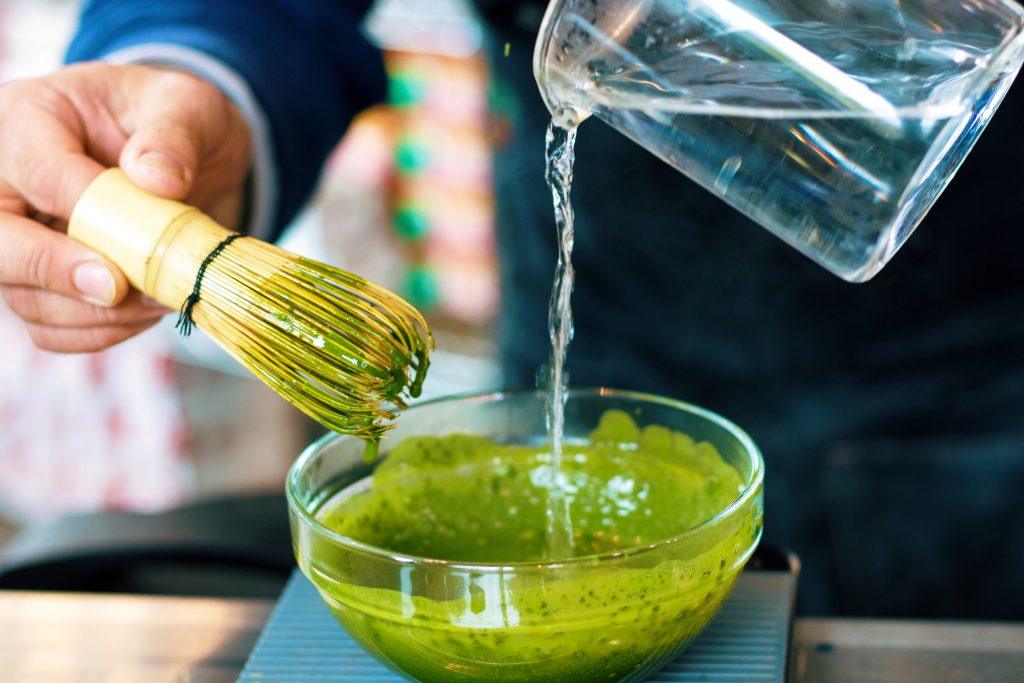Yerba mate and matcha tea are two of the more popular drinks all over the world. They each have loyal followings who tout the benefits of each beverage.
Where do these teas originate, why are they so popular, which one contains more caffeine, what is the cultural importance of each, and how are they prepared? Those questions and a few more are discussed below.
Where do mate and matcha come from?
Matcha tea is the ground powder of non-fermented camellia sinensis plant leaves.
Yerba mate comes from a rainforest tree that is actually a form of holly. The twigs and leaves of the tree are thoroughly dried and then crushed by hand or in a special machine.
Are they popular?
Yerba mate’s global reach is impressive, selling about $1.2 billion currently, with the total expected to reach $1.5 billion by 2021.
Matcha has about $3 billion in current world sales with a larger increase, up to $5 billion total, expected by 2025.
Both drinks are big sellers on every inhabited continent and are steadily gaining loyal customers each year.
How much caffeine is in each drink?

Matcha tea contains just less than 9 milligrams of caffeine per ounce or approximately 50 mg per 6 ounces serving.
Yerba is the caffeine champ of the two, with 10.5 milligrams per ounce, or about 63 mg per 6 ounces serving.
For comparison purposes: a cup of brewed coffee contains between 8 and 17 milligrams of caffeine per ounce, or between 54 and 102 mg per 6 ounces serving.
How do the two compare for nutrition?
Matcha is packed with good stuff, like vitamins A, B, C, E, and K, zinc, potassium, and caffeine. There’s also the amino L-theanine and several antioxidants like chlorophyll and catechins.
Mate contains several amino acids, some antioxidants, theobromine (a key component of chocolate), caffeine, and theophylline.
Both drinks are very low in calories and can help boost the body’s metabolism.
What are the origins of each drink?
Matcha made its way to Japan from China, but probably not in powdered form, about 900 years ago. After that, it quickly caught on as the staple component of the formal tea ceremony.
The earliest evidence of yerba mate dates back to the late 1500s in modern-day Paraguay.
What’s the best way to prepare yerba mate and matcha?

Mate is prepared as any steeped version of common tea. The dry leaves are placed in very hot water. Use one tablespoon of loose mate per 8 ounces of water. After about 5 minutes, it’s ready to drink. Don’t use boiling water. Add sweeteners after steeping. Peppermint, honey, and sugar are commonly used.

For a quick matcha drink, use one scoop and a cup of hot, but not boiling, water. Mix well with a whisk and add desired sweeteners and extras. Honey, milk, sugar, and cinnamon are favorites.
What about health claims for yerba mate and matcha?
While matcha is famous for its many verified health claims, like lower cholesterol, weight management, the reduction of inflammation, blood sugar control, and improved mental clarity, yerba mate has some rather impressive medical stats as well.
Matching matcha’s ability to bring about better mental clarity and lower blood sugar levels, yerba mate has also been shown in research studies to help with bone health, work to possibly prevent diabetes, fight obesity, bring cholesterol levels in check, and help people who suffer from constipation, fatigue, urinary infections, headaches and depression.
What is the cultural significance of each drink?
Both matcha and yerba mate have strong social-cultural importance in their places of origin.
For matcha, that means Japan, where the tea is a national drink and a huge source of export revenue. In addition to social occasions and formal events, matcha is served (most famously) during the tea ceremony. The ritual is one of the nation’s most important historical traditions and because tea is at the center of the event, matcha is revered by traditional Japanese people as a sacred beverage.
In South America, yerba mate has an equally important status within the culture but is not closely associated with a quasi-religious ritual like Japanese tea ceremony. Instead, the drink is part of a long regional history of socialization among small groups. People commonly drink mate with friends, and pass the container around, with each taking a small sip until it’s time to refill the jug.
Note: This discussion is not to be taken as any kind of medical advice. It is offered solely for informational purposes. Readers who have questions about their health should consult a healthcare professional.
